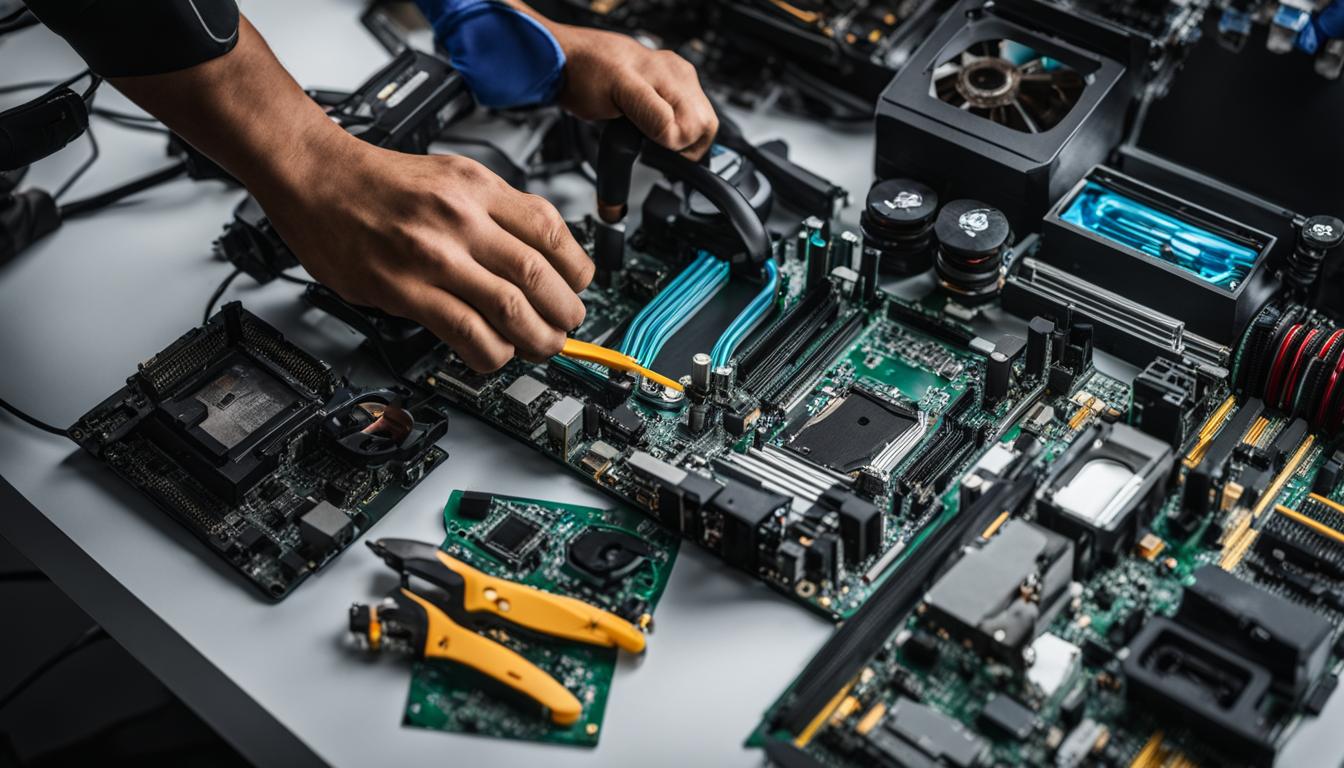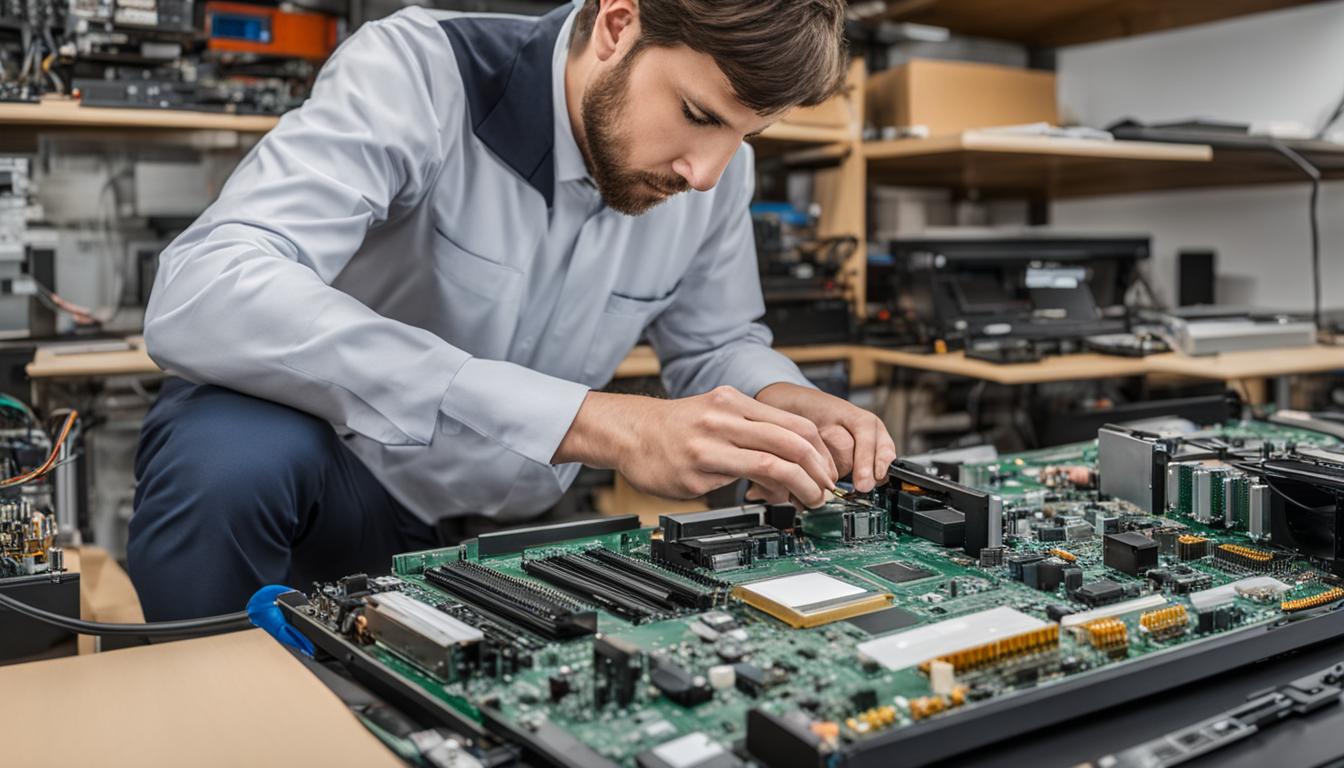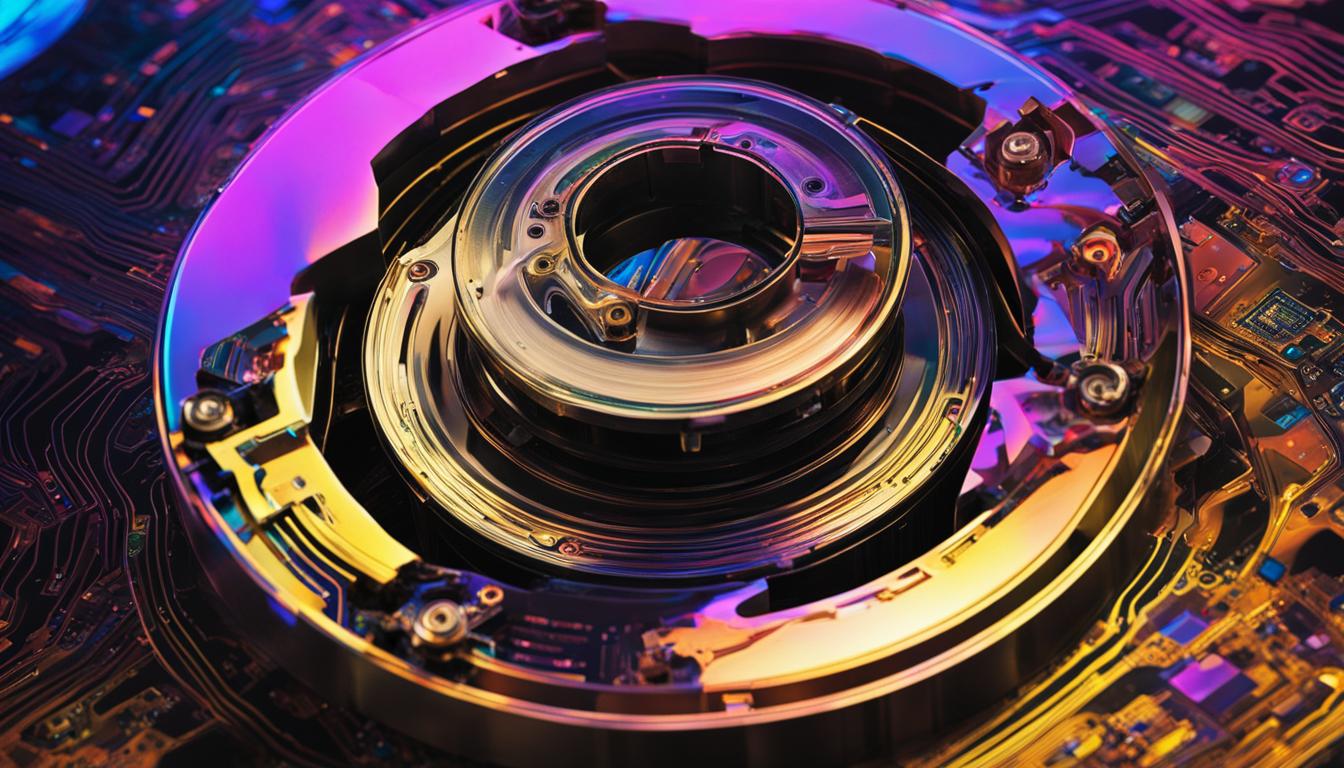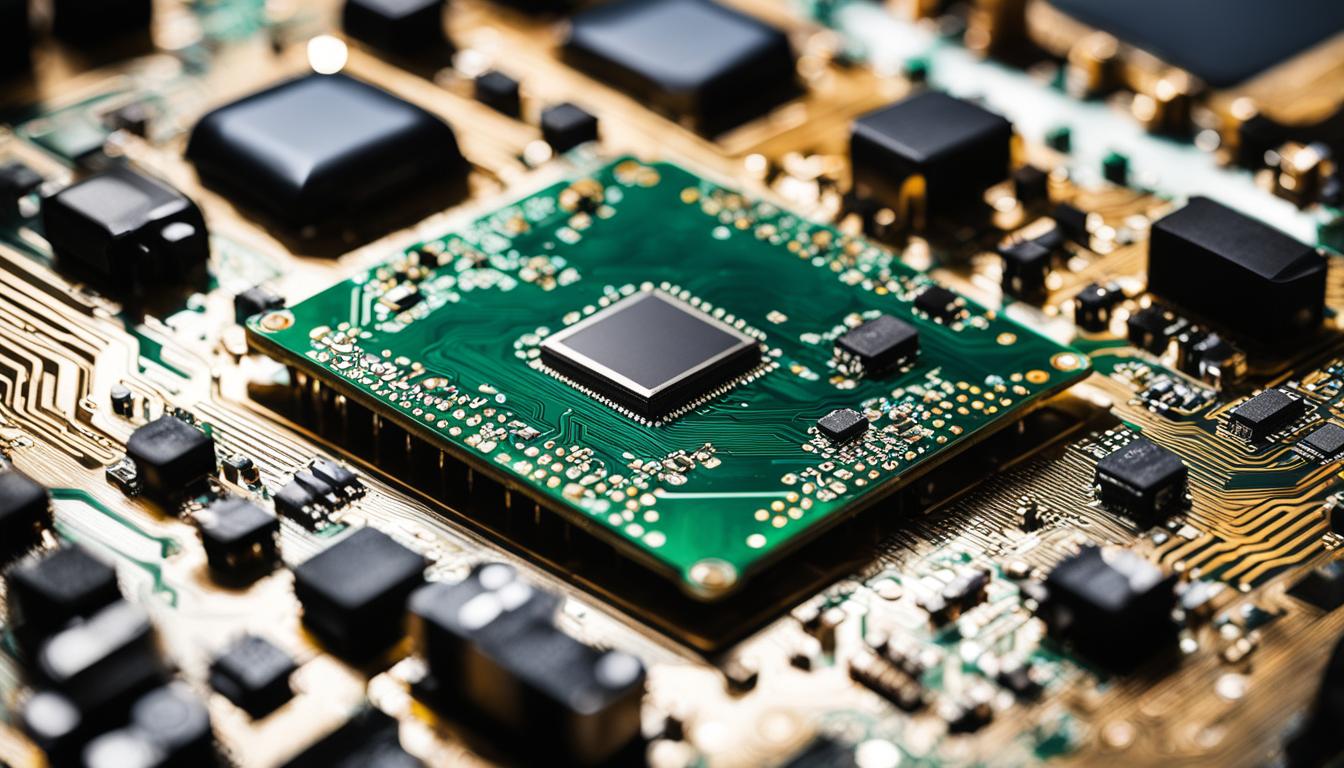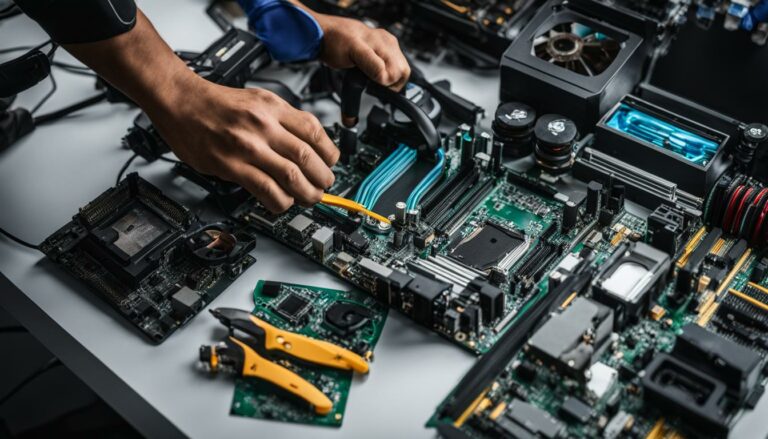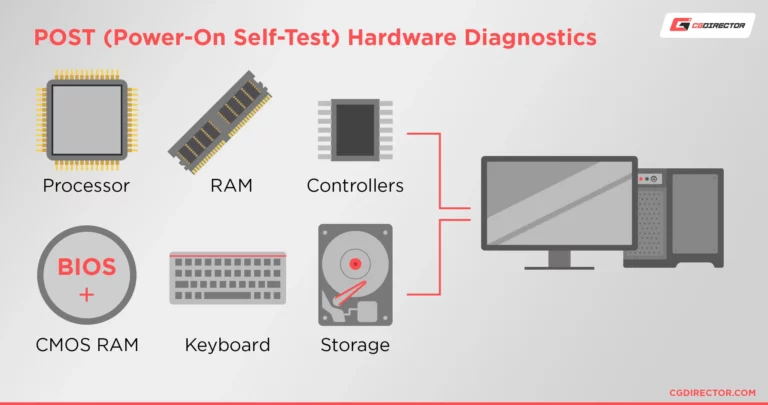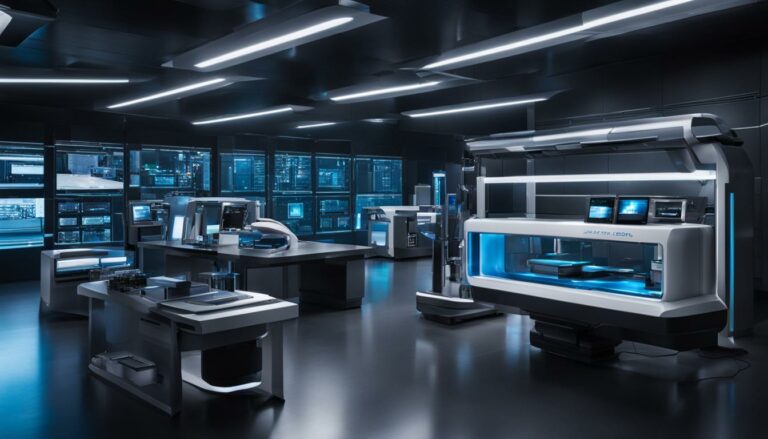Exploring the role of operating system reinstallations in computer servicing
Operating system reinstallations are a crucial aspect of computer servicing and can help enhance the efficiency of a computer. When buying a new PC, it typically comes with a pre-installed version of the operating system. However, if the computer is experiencing issues, reinstalling the operating system can often resolve the problems. This process is most effective when a restore disk is provided with the computer or when the original Windows discs are available for an ordinary installation.
Before reinstalling Windows, it is important to make backup copies of all personal data and keep the alphanumeric product key that came with the installation disc. The process involves restarting the computer, entering the BIOS settings, selecting the CD/DVD drive as the first boot device, and inserting the Windows installation CD. The installation process varies slightly depending on the version of Windows being installed, but typically includes options to reformat the hard drive and enter the product key. Once the installation is complete, the computer will be back to its original state, ready for use.
Reinstalling the operating system can be a powerful tool in computer maintenance, allowing users to resolve issues and restore their computer’s performance. Whether it’s a system restore, computer format, or software reinstall, conducting a clean install or system recovery can significantly improve the overall functionality of the computer and provide a fresh start. By exploring the significance of clean installs and understanding the process involved, individuals can effectively maintain and optimize their computer systems.
The Significance of Clean Installs in Computer Maintenance
When it comes to computer maintenance, clean installs play a significant role in ensuring optimal performance. Unlike upgrades that retain elements of the previous operating system or application, clean installs completely eradicate any previous version and install the software from scratch. This process involves formatting the hard drive, erasing all existing data, and starting fresh with a clean slate.
Clean installs are particularly beneficial when installing a new version of an operating system or application for the first time. They offer a fresh start with a clean registry, removing any potential conflicts or issues from previous installations. By eliminating unnecessary files and programs, clean installs can improve system speed and efficiency, as well as optimize memory usage.
Additionally, clean installs are recommended in certain situations, such as when troubleshooting fails to resolve software or operating system issues, or when important files are corrupted and an upgrade is not possible. By performing a clean install, users can eradicate potential malware or viruses, ensuring a secure and stable computing environment.
Performing a clean install of an operating system, like Windows 10, involves backing up the system, creating installation media, and following the necessary steps to reinstall the OS. It’s important to note that clean installs will result in the loss of all data, so it’s crucial to back up important files before proceeding.
| Benefits | Description |
|---|---|
| Improved Performance | A clean install removes unnecessary files and programs, optimizing system speed and efficiency. |
| Enhanced Security | By eradicating potential malware or viruses, clean installs ensure a secure and stable computing environment. |
| Optimized Memory Usage | Clean installs help optimize memory usage by removing unnecessary data and applications. |
| Fresh Start | Clean installs provide a clean slate, eliminating any potential conflicts or issues from previous installations. |
File Management in Operating Systems
File management is a fundamental function of operating systems, allowing users to organize, create, edit, update, and delete files efficiently. Operating systems provide graphical user interfaces or command-line interfaces that facilitate these file management tasks, enabling users to navigate and manipulate files and folders effortlessly. Here, we explore the essential aspects of file management and the functionalities it offers.
Organizing Files
Effective file management entails organizing files in a structured and logical manner. Operating systems provide users with tools to create folders or directories, categorize files into different folders, and rename files or folders for easy identification. By implementing a well-organized file structure, users can quickly locate and access their desired files, improving productivity and efficiency.
Creating, Editing, Updating, and Deleting Files
Operating systems empower users to create new files with specific file extensions, such as documents, spreadsheets, presentations, or images. Additionally, users can edit existing files by modifying their content or properties. Updating files involves making changes and saving them, ensuring the latest version is available. Finally, when files are no longer needed, operating systems facilitate secure deletion, freeing up storage space and maintaining data privacy.
File Permissions
File permissions are crucial for maintaining data security and privacy. Operating systems offer control over file permissions, allowing users to specify who can access, modify, or delete files and folders. These permissions can be set individually for different users or groups, ensuring that data remains protected and only accessible to authorized individuals or processes.

| Function | Description |
|---|---|
| Organizing Files | Allows users to create folders, categorize files, and maintain a structured file system. |
| Creating Files | Enables users to create new files with specific extensions for different purposes. |
| Editing Files | Facilitates modifications to the content or properties of existing files. |
| Updating Files | Allows users to make changes to files and save the latest versions. |
| Deleting Files | Enables secure deletion of files no longer needed, freeing up storage space. |
| File Permissions | Controls access, modification, and deletion rights for files and folders. |
File management is a vital component of operating systems, offering users the ability to organize, create, edit, update, and delete files efficiently. By leveraging the file management capabilities provided by operating systems, users can maintain an organized file structure, ensure data security through file permissions, and boost productivity in their daily tasks.
Device Management in Operating Systems
Device management is a crucial function of operating systems, ensuring the smooth operation of various hardware devices connected to a computer. It includes tasks such as allocating memory, processing input and output requests, managing storage devices, and configuring device settings. This section will explore the importance of device management in operating systems and its impact on overall system performance and security.
One of the key aspects of device management is memory allocation. Operating systems allocate memory resources to different devices to ensure they have the necessary space to function efficiently. By effectively managing memory allocation, operating systems prevent conflicts and ensure that devices have access to the memory they require.
In addition to memory allocation, operating systems handle input and output requests from devices. Whether it’s a keyboard, mouse, printer, or other peripherals, the operating system processes the input signals and directs the corresponding output. This ensures that user commands are executed correctly and that devices operate seamlessly with the operating system.
Furthermore, device management involves managing storage devices such as hard drives, solid-state drives, and external storage devices. Operating systems provide functionalities for formatting, partitioning, and managing file systems on these storage devices. This allows users to organize and store their data efficiently. The operating system also facilitates software installation and updates for devices, ensuring that they have the latest drivers and firmware to function optimally.
Lastly, device management plays a crucial role in maintaining system security. Operating systems provide options to configure device settings and security preferences. This includes managing access controls, permissions, and encryption settings for devices. By effectively managing device security, operating systems protect against unauthorized access and potential security threats.
Overall, device management is an essential function of operating systems that enables efficient and secure usage of hardware devices. By allocating memory, processing input and output requests, managing storage devices, and ensuring security, operating systems optimize the performance and reliability of a computer system.

Table: Examples of Device Management Tasks
| Device Management Task | Description |
|---|---|
| Memory Allocation | Operating systems allocate memory resources to devices to ensure efficient operation. |
| Input and Output Processing | Operating systems process input signals from devices and direct corresponding output. |
| Storage Device Management | Operating systems handle formatting, partitioning, and file system management on storage devices. |
| Software Installation and Updates | Operating systems facilitate the installation of device drivers and firmware updates. |
| Device Security Configuration | Operating systems allow the configuration of security settings for devices to protect against unauthorized access. |
Process Management in Operating Systems
Process management is a crucial aspect of operating systems, governing the execution and control of programs on a computer. It involves various tasks such as starting and stopping programs, allocating resources, managing memory usage, and ensuring program security. The operating system plays a vital role in overseeing these operations to ensure a smooth and efficient computing experience.
One of the primary functions of process management is the initiation and termination of programs. When a user launches a program, the operating system allocates the necessary resources, such as memory and CPU time, to ensure its execution. Similarly, when a program is no longer needed, the operating system terminates it and frees up the allocated resources for other processes.
Allocation of resources is another critical aspect of process management. The operating system manages the distribution of resources among different programs, ensuring fair and efficient utilization. It prioritizes processes based on factors such as their importance, user interaction, and system requirements, effectively managing the available resources.
“The operating system must maintain the security and integrity of running programs. It enforces program security by controlling access to system resources and preventing unauthorized access or malicious activities.”
Memory management is an essential component of process management, ensuring that programs have access to the required memory for execution. The operating system keeps track of memory usage and allocates memory to running processes. It also optimizes memory usage by identifying and resolving memory fragmentation issues, enhancing system performance.
| Process Management Tasks | Description |
|---|---|
| Starting and stopping programs | Initiating and terminating the execution of programs on a computer system. |
| Allocating resources | Managing the distribution of system resources, including memory, CPU time, and peripherals, among different processes. |
| Managing memory usage | Monitoring and optimizing the utilization of computer memory by running processes. |
| Ensuring program security | Controlling access to system resources and protecting programs from unauthorized access or malicious activities. |
Process management is a fundamental function of operating systems that ensures the efficient and secure execution of programs. By effectively allocating resources, managing memory usage, and ensuring program security, the operating system plays a critical role in optimizing the overall performance of a computer.
Key Points:
- Process management involves starting and stopping programs, allocating resources, managing memory usage, and ensuring program security.
- The operating system allocates resources to programs based on their requirements and manages their execution.
- Memory management ensures efficient memory utilization by monitoring memory usage and optimizing allocation.
- The operating system enforces program security to protect against unauthorized access or malicious activities.
Memory Management in Operating Systems
Memory management is a crucial function of operating systems that involves managing processes, allocating memory, tracking memory usage, and optimizing memory usage. The operating system plays a key role in ensuring that computer programs have the necessary memory resources to run smoothly.
When managing processes, the operating system allocates memory to each process based on its requirements. It keeps track of how much memory is allocated to each process and ensures that there is enough available memory to meet the demands of all running programs. By efficiently managing memory allocation, the operating system prevents memory-related issues such as crashes and slow performance.
Additionally, the operating system continuously tracks memory usage to identify any potential memory leaks or inefficient memory usage. It monitors the memory usage of each process and identifies if any process is consuming excessive memory. By identifying and addressing memory-related issues, the operating system helps optimize memory usage, leading to improved system performance.
Memory management is an essential aspect of operating systems. It ensures that processes have the necessary memory resources and optimizes memory usage. By effectively allocating and tracking memory, the operating system improves system stability and performance.
| Memory Management Tasks | Function |
|---|---|
| Allocating Memory | The operating system allocates memory to processes based on their requirements. |
| Tracking Memory Usage | The operating system monitors the memory usage of each process to identify any excessive consumption or potential memory leaks. |
| Optimizing Memory Usage | By efficiently managing memory allocation and addressing memory-related issues, the operating system optimizes memory usage and improves system performance. |
In conclusion, memory management is a critical function of operating systems that ensures efficient utilization of memory resources. By managing processes, allocating memory, tracking memory usage, and optimizing memory usage, the operating system improves system stability and performance.
The Importance of Job Accounting in Operating Systems
Job accounting is a crucial feature in operating systems that plays a significant role in resource tracking, system usage, performance monitoring, troubleshooting, and identifying unauthorized software installations. It provides valuable information for system administrators to effectively manage and maintain computer systems.
One of the primary functions of job accounting is resource tracking. It keeps records of how computer resources are utilized, enabling administrators to monitor and optimize resource allocation. This information is essential for identifying any inefficiencies or bottlenecks in system performance.
Furthermore, job accounting facilitates system usage analysis by providing detailed data on which users and processes are utilizing system resources. This analysis is valuable for billing purposes, ensuring fair resource distribution, and identifying any unauthorized activities or unauthorized software installations that may compromise system security.
Performance monitoring is another critical aspect of job accounting. It allows administrators to monitor system performance metrics, such as CPU usage, memory utilization, and disk activity. By monitoring these metrics, administrators can proactively identify and address any performance issues, ensuring the smooth operation of the computer system.
| Key Benefits of Job Accounting |
|---|
| 1. Efficient resource allocation and tracking |
| 2. Usage analysis for billing and security purposes |
| 3. Proactive performance monitoring and issue resolution |
In conclusion, job accounting is a vital tool in operating systems that provides valuable insights into resource utilization, system usage, performance monitoring, and troubleshooting. By leveraging the information provided by job accounting, system administrators can effectively manage and maintain computer systems, ensuring optimal performance, security, and efficient resource allocation.
Conclusion
Operating system reinstallations play a vital role in computer servicing, enhancing system efficiency and resolving various issues. By performing a clean install, individuals can troubleshoot and optimize the operating system for better performance. Effective file management, device management, process management, memory management, and job accounting are all important functions that contribute to the smooth operation of a computer system.
Understanding the significance of these functions and knowing how to reinstall the operating system when needed can greatly improve the overall experience and longevity of a computer. Whether it’s organizing files, managing devices, allocating resources, optimizing memory usage, or tracking system usage, a well-maintained operating system ensures the efficient functioning of a computer.
From ensuring file organization and security to managing devices and optimizing memory usage, each aspect of operating system management plays a crucial role in the smooth operation and optimal performance of a computer. Taking the time to understand and apply these principles, along with the occasional reinstalling of the operating system when necessary, can significantly enhance efficiency and prolong the lifespan of your computer.
FAQ
What is the significance of operating system reinstallations in computer servicing?
Operating system reinstallations can help resolve computer issues and enhance system efficiency.
When should I perform a clean install?
Clean installs are recommended when installing a new version of an operating system or application, troubleshooting fails, or important files are corrupted.
What is file management in operating systems?
File management involves creating, editing, updating, and deleting files, as well as organizing them and setting file permissions.
How does device management work in operating systems?
Device management involves configuring settings, installing updates, and managing security for devices connected to a computer.
What is process management in operating systems?
Process management involves starting and stopping programs, allocating resources, managing memory usage, and ensuring program security.
Why is memory management important in operating systems?
Memory management optimizes memory usage, tracks memory usage, and ensures efficient execution of programs.
What is job accounting in operating systems?
Job accounting tracks system usage, resource allocation, and performance monitoring to help identify issues and track unauthorized software installations.


